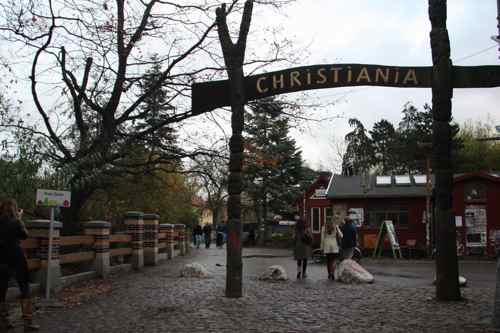
When I asked friends for sightseeing recommendations in Copenhagen, Christiania came back as the top answer. So I was thrilled to see that one of the tours offered for the first day of TBEX was to this mysterious little area.
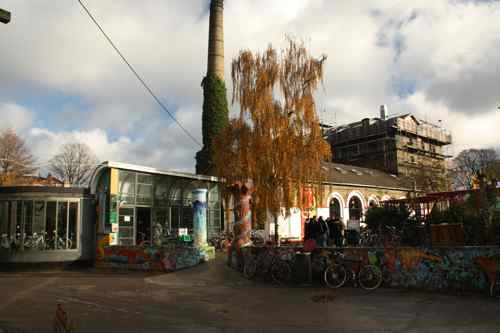
You can wander around Christiania on your own, but I’d recommend going with a tour led by a resident. It’s the kind of place that benefits highly from narrative and someone to ask questions to.
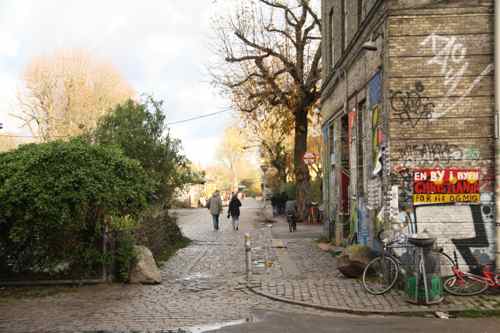
There are plenty of sites that will tell you the in-depth history of Christiania, but here it is in a nutshell: in 1970 some folks broke into an abandoned military site in Copenhagen. The land was quickly appropriated by hippies and anarchists, and the ‘social experiment’ began. Forty years later there is much tension between the government of Denmark and the (meanwhile 600) residents of Christiania, but the area still exists as a semi-autonomous enclave of interestingness.
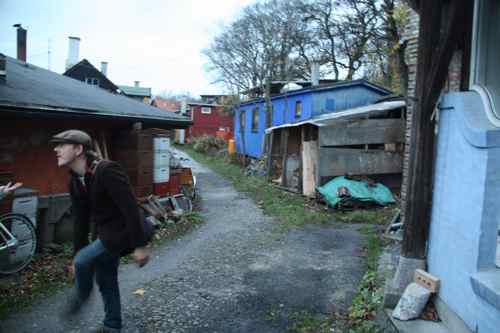
In some ways Christiania feels very rogue and chaotic, in others very orderly and civil. Government is by consensus, which sounds tedious but somehow works. There’s a budget, and public relations, and coordination with the official Copenhagen Tourism Bureau, which admits that Christiania is one of the places they get the most requests about. Homes in Christiania range from opulent to shack-like, and the residents come from all parts of society.
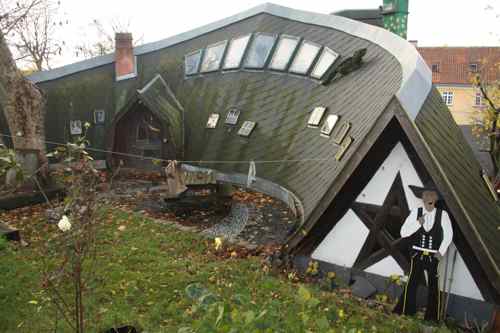
Christiania contains shops, restaurants, and cafes, but the most interesting commercial area is Pusher Street. Pusher Street has gone through many iterations over the years; depending on exactly when the guide you’re reading was written, it will say “scary and full of hard drugs!”, “Totally shut down!”, or something in between. It will always tell you that photography is not allowed, a sentiment reiterated by our guides and by the giant “no photos” signs at either end of the street. Unfortunate, since I would have loved to take photos.
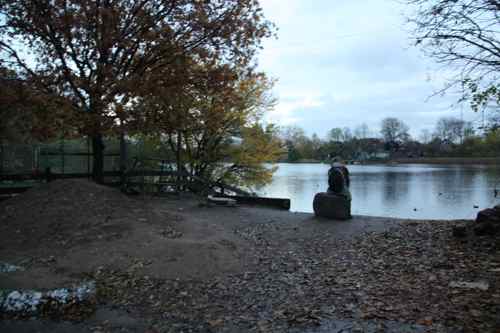
Never have I seen bags of marijuana or bricks of hash so artfully displayed for the public’s buying pleasure, as if they were fancy hand-made soaps and exotic gourmet teas. Currently soft drugs are allowed on Pusher Street, within certain limitations, but the residents of Christiania are keen to keep the hard stuff out of their community.
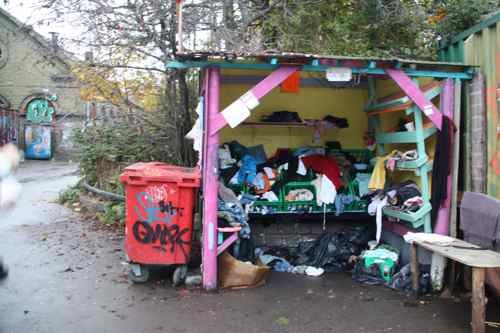
But it’s not really about the drugs. Or the cargo bikes. In this sentence, I’m supposed to tell you what it is all about, but I confess I don’t really know. I have pages of notes from our discussion with Christiania residents, but each question they answered bred dozens of additional ones in my mind.
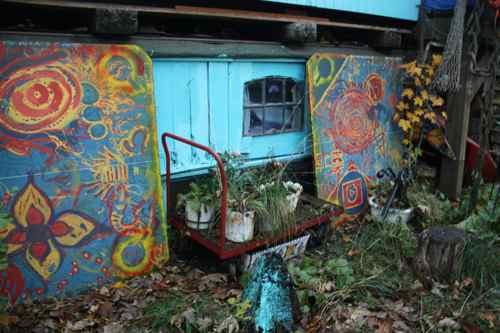
The Danish government has become more conservative since 9/11, and the legal pressure on the citizens of Christiania is mounting. I wish them well in their struggle to hold on to this fascinating place they have built.
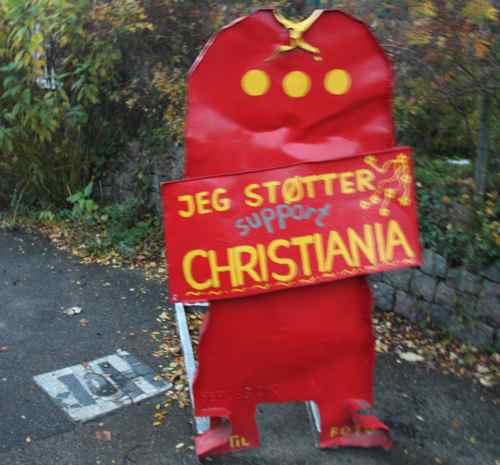
Reminds me a little of the Kultfabrik.
thanks for posting on this! We were in CPH this summer and didn’t have the time to explore this region and I was disappointed. Fascinating! Looks like corners of Berkeley in CA! =P
Looks like my kind of place.
I swear I’m going to retire to some place “off the grid”.
Selling bags of fun stuff on the street would just be a bonus.
Sort of reminds me of Byron Bay in Queensland, Aus. Alternative lifestyle, itinerant, and liberal lifestyle. Wonder how long it will survive?
Great photos! Christiania is definitely at the top of my list the next time I go, unbelievable how much there is to do in Denmark!
Hello, stopping by via ICLW.
This post was fascinating. I’d never heard of Christiania, but I’d love to see it now. Not surprised you have so many unanswered questions! Love the photos, too.
Kate
I fell in love with a boy from Copenhagen once when I was travelling… but I’ve never been. Your photos are gorgeous!
Sounds like a very interesting place to visit!
I love that picture of the green triangle house.
Happy ICLW
~*~ Happy ICLW ~*~ WOW!! Sounds very interesting!! Looks really interesting!! Thanks for sharing!! Enjoy Demark!
I’ve been to Copenhagen, but never heard of this place. Very interesting!